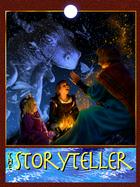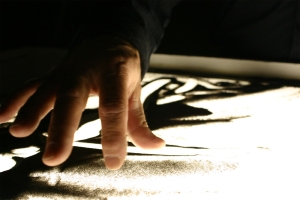I frequently come across uses of storytelling that are tangential to my direct interests but are interesting nonetheless – uses I probably would not have thought of, though they certainly don’t surprise me. Here are a few:
-
- Software development has the “user story,” defined as “a very high-level definition of a requirement, containing just enough information so that the developers can produce a reasonable estimate of the effort to implement it.” See Agile Modeling User Stories
- Similarly, software testing: Karen Johnson posts fascinating reflection on how storytelling might be applied to software testing, excerpted here:
I felt surrounded by facts, stacks and stacks of facts. How many builds did we have before we shipped? How many defects have been found? On and on with the facts and metrics. I think the American culture is a bit obsessed with facts too – the daily paper is loaded with useful facts and stats like the stock market and sports page. The paper is also loaded with bizarre facts that I don’t know what to do with (like the first octopus with 6 legs was just found) fabulous but what am I supposed to do with this information? Facts roll out of my mind quickly, I don’t retain them. It’s like reading about the national deficit – interesting isn’t it that the larger the number the less meaning it seems to have and that without meaning the information doesn’t stick? I’ve grown restless with facts. My analytical brain has been saturated… I think part of me wanted to hear the stories I was missing, I missed the connection to the gory tales and details of the bugs.
- There’s a huge amount of discussion about storytelling in games, especially videogames, which I find a little amusing because I love storytelling but loathe and detest games. An interesting discussion on the subject appears here. In the blog Man Bytes Blog, “Corvus” notes that “modern card games have very deep storytelling roots.” He or she goes on to discuss the custom deck for Renown, a game that is played within Corvus’s storyworld: “I wanted to design a deck that had deep cultural significance (within the storyworld) and that could be used for multiple purposes within the context of my games.” I don’t pretend to understand Corvus, but despite my loathing of games, I am intrigued. In the blog, Digital Worlds – Interactive Media and Game Design, Tony Hirst (I think) discusses the “argument between narratologists and ludologists on the role of story in games,” addressing the question: “Do Game Players Tell, or Create, Stories?”
- In a similar vein, Archetype Storytelling Cards are available for “develop[ing] fascinating situations, random traits or even entire characters for your games and stories. Inspired by the Tarot, these lavishly illustrated cards embody universal concepts found in every person, object or situation you might encounter.”


- Hip-hop music. I don’t follow hip-hop at all, but at the blog Stuntin’ on Prose, “Hugh” says: “My favorite element of hip-hop is storytelling. Over the years I’ve heard countless tracks where the emcee paints a vivid picture giving us characters, a plot and even sometimes a twist ending.” He goes on to list his 10 favorite storytelling hip-hop tracks.
- Proposal writing. Mike Brotherton’s blog entry about using story in astronomy proposals reminds me of Robert S. Frey, who was a wonderful resource for my dissertation. A highly successful proposal writer, Frey has an article about using story in writing proposals (the PDF version no longer seems to be available, but the HTML version is here.)
